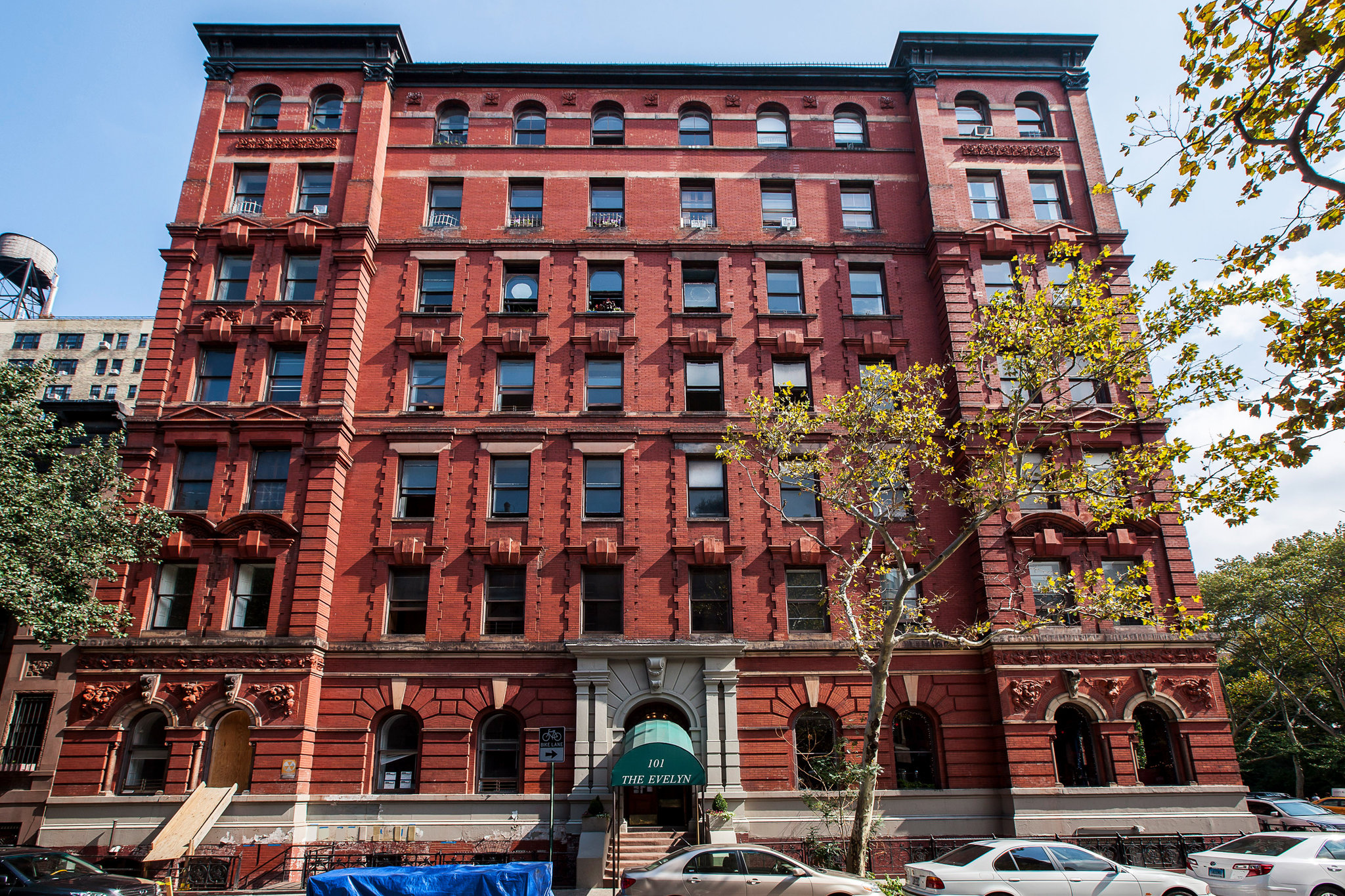New York City’s charm lies partly in its unique architecture, which traces its roots back to the Dutch settlement in the mid-17th century. The construction of Central Park in the mid-1800s marked the beginning of a surge in apartment buildings. The undeveloped Upper West Side condos, viewed as a lucrative opportunity, succeeded in the rise of notable structures like the San Remo and the Dakota, attracting affluent buyers and fueling the construction of refined buildings on the West End.
The completion of the subway in 1904 facilitated a seamless connection between the northern and southern parts of the city, further fostering the growth of the West End. Today, the Upper West Side stands as a predominantly affluent residential area. Its residents value the proximity to Central Park, pre-war Harlem brownstones, luxurious townhouses, and peaceful, tree-lined streets.
The Historic Buildings Of Upper West Side Condos
The Dakota
The Dakota stands out as one of the most esteemed co-ops in the Upper West Side and holds a significant place in Manhattan’s condos’ history. Particularly, it gained fame as the former residence of John Lennon and tragically, the site of his murder.
Situated at the intersection of 72nd Street and Central Park West, the Dakota was designed by Henry Hardenbergh. He is the architect behind the Plaza Hotel and numerous brownstones in Harlem and the rest of NYC. Built between 1880 and 1884, the structure boasts brick and sandstone walls.
Architecturally, the Dakota exhibits the North German Renaissance style, characterized by terracotta panels and balconies. The interior and layout draw inspiration from the French architectural trends prevalent in New York City during the late 1800s.
The Dakota earned the status of a New York City Landmark in 1969. Subsequently, it was added to the National Register of Historic Places in 1972 and designated a National Historic Landmark in 1976.
The Ansonia
Initially a hotel from 1899 to 1904, the Ansonia transformed into the Upper West Side condos. Proudly declaring itself as the “Address of the West Side,” this historic establishment was originally designed by Paul E. Duboy. The property’s unique features included a rooftop farm, allowing bellhops to deliver fresh produce and dairy to guests—an embodiment of the developer’s utopian vision. Quirky amenities such as Turkish baths and a lobby fountain with live seals added to the building’s unconventional history, and it was the first hotel in New York to have air conditioning.
The expansive space is well-suited for grand gatherings or a large family, featuring a sequence of adjacent sunlit rooms, including a living room, dining room, media room, and a wraparound balcony. The residence encompasses a distinctive circular 21-foot living room, a lavish 30-foot dining room, a library, 5 to 7 bedrooms plus a maid’s room, and 5.5 bathrooms, with three en suites.
The Dorilton
It is one of the most visually striking apartment buildings on the Upper West Side. Built from 1900 to 1902, the structure showcases a limestone and brick exterior adorned with sculpted figures reminiscent of those found in front of French palaces.
A notable feature of The Dorilton is its beautiful three-story mansard roof, which underwent restoration in 1998 along with the rest of the building’s exterior. The building was designated a New York City Landmark in 1974 and was first listed on the National Register of Historic Places in 1983.
The Chatsworth
Another New York landmark, The Chatsworth condos, and the building itself, positioned overlooking Riverside Park on the Upper West Side, is truly an icon. Its name, borrowed from England’s legendary estate, Chatsworth House, known as the Cavendish family’s home since the 1500s. Architect John E. Scharsmith crafted the building in an elaborate French Beaux-Arts style, adorned with hand-sculpted cherubs, fruit, and stags, attracting Manhattan’s elite and becoming a refuge for the city’s most captivating personalities.
This residence offers expansive views of the River and Park. It gives you a roomy entrance foyer, a grand living space, and a designer-windowed kitchen with top-notch appliances and an oversized center island. Then you get bespoke pre-war details like solid white oak herringbone floors with a walnut inlay, custom millwork and moldings, and high ceilings. Modern amenities include core paneled doors, a separate windowed utility room, and a dedicated HVAC system among others.
The San Remo
Living in San Remo apartments naturally means the most impressive views of Central Park available. Initially built as an apartment complex from 1929 to 1931, it underwent conversion to a co-op in the 1970s. Over the years, and continuing today, numerous celebrities have chosen the San Remo as their residence, including Steven Spielberg, Dustin Hoffman, Tiger Woods, Demi Moore, Bruce Willis, and Bono.
The building was originally designed in the Beaux-Arts style, featuring marble walls and terrazzo floors. Each tower’s top floor showcases an English Baroque mansion beneath a Choragic Monument of Lysicrates. The building earned a spot on the National Register of Historic Places in 1982.
Your Own Upper West Side Condos
Looking for your place in the City of New York and don’t like Harlem brownstones? Well as much as we’d like to change your thoughts on the brownstones we understand where you are coming from. There aren’t a lot of people who can resist the condos’ charm. To get your own, let The Boland Team NYC help you.













